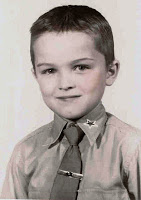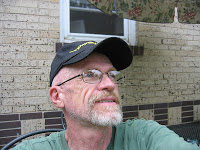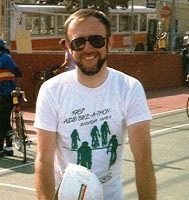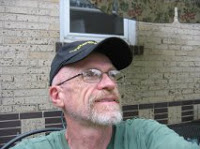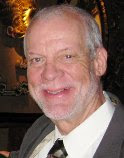June 1956, when I was banished (due to divorce proceedings) from California and
sent to Minnesota to live with my grandparents on their farm. I had just turned 8 years old on the 9th. At the time, I expected to be gone for only
the summer; but it turned into a 2 year “prison sentence” away from home and
“loving” parents.
Dixon, who was 11 in December of 1955 and 11 ½ by June of ’56; and about to
enter 6th grade, while I was looking at starting 3rd
grade. Due to that traumatic spanking I
received when only 4 or 5, I was extremely shy and reluctant to let anyone see
me dressing, undressing, in my underwear, or bathing; and would “pitch a fit”
if someone tried. Of course, I couldn’t
do much when Grandma bathed me the first two times in the summer kitchen’s
galvanized “wash tub” because I hadn’t washed all the dirt off by myself. I quickly learned to do that however. I was dirty because farm life is not soil
free and baths were only on Saturday nights to be fresh for church on
Sunday. I had to use my uncle’s used
bathwater so perhaps I never really got clean.
then knew from personal experience of my extreme reactions to any attempt to
breach my “modesty”, began to tell me about having to take showers naked with
other boys present after gym classes beginning in 6th grade. Daily school showers were a necessity back
then as most farms did not have indoor plumbing and once a week bathing on the
farm just wasn’t sufficient in a close social environment. Pubescent boys smell as they perspire during
gym activities and recess playtime.
about showering naked with other boys, I began to develop a fear of 6th
grade, even though it was 3 school years away and I expected to return to
California soon. The months of my exile passed,
and a new school year began and I realized that 6th grade was now
closer than desired and my fear level increased but mostly ignored for the time
being. Fortunately, I was given a
reprieve and my “sentence” was commuted in late May of 1958 and I was taken
back to California to live with my mother and her new husband.
So. Lake Tahoe, I discovered that there were no showers after recess or any
P.E. classes in elementary school, those being reserved and mandatory in high
school only. I was able to put my fear
and stress level on hold for 4 more years, while I got to “enjoy” the
beginnings of puberty.
face my fear as I had finally arrived at high school and the dreaded after P.E.
mandatory naked showers with other boys.
By now, due to my well-established desire to see any boy naked, I no
longer feared being naked among boys (or girls for that matter). What I was afraid of was having a spontaneous
erection while showering, because at 14, I was still having random ones.
was sitting in front of my 9th grade English teacher, Mrs. Joyce
Holmstad. She wore low cut blouses and
sat on the front edge of her desk (directly in front of me) and would often
lean forward revealing to me (or maybe exposing to me) some bra and more than
sufficient for erection purposes, cleavage.
I always had to hide my crotch with books when I left at the end of the
class period. But I digress from the
gym. In all the four years of mandatory
PE showers, no one ever got an erection that I could tell, and I certainly took
every opportunity to look for one.
is really Jim #1. I met Jim Robertson
when he was 11 and I was 13. We became
friends and he asked me to go to church with him one Sunday and we went for
about one month until the pastor and his baby were killed in a car crash. I invited Jim to join Boy Scouts with me and
he did. We were two of seven boys who
ended up starting a new troop, #456, at So. Lake Tahoe. I taught him about sex and we became
sex-playmates on sleep over nights but never did anything together during scout
campouts. He ended up going to live with
his aunt and, according to him, began to really enjoy sex with his female
cousin.
is really Jim #2. Jim Dunn was the son
of a California highway patrolman and joined my scout troop when he was 12 and
I was 14. He was taller than most boys
his age and matched my height of 5′ 11”.
His hair was blondish and eyes a very nice shade of blue. I liked him for his looks and gentle
personality. Strangely, I was never
sexually attracted to him probably because he did not look “interested”. I was so naïve about that stuff.
Scouts, we shared a couple of experiences that should have tipped me off that
he was interested in boy sex play, but I never caught on. As an adult, I learned that he died early
from AIDS.
the Author
1948 in Los Angeles, living first in Lawndale and then in Redondo Beach. Just prior to turning 8 years old in 1956, I was
sent to live with my grandparents on their farm in Isanti County, Minnesota for
two years during which time my parents divorced.
mother and stepfather two years later in 1958, I lived first at Emerald Bay and
then at South Lake Tahoe, California, graduating from South Tahoe High School in
1966. After three tours of duty with the
Air Force, I moved to Denver, Colorado where I lived with my wife and four
children until her passing away from complications of breast cancer four days
after the 9-11-2001 terrorist attack.
in the summer of 2010. I find writing
these memories to be therapeutic.
